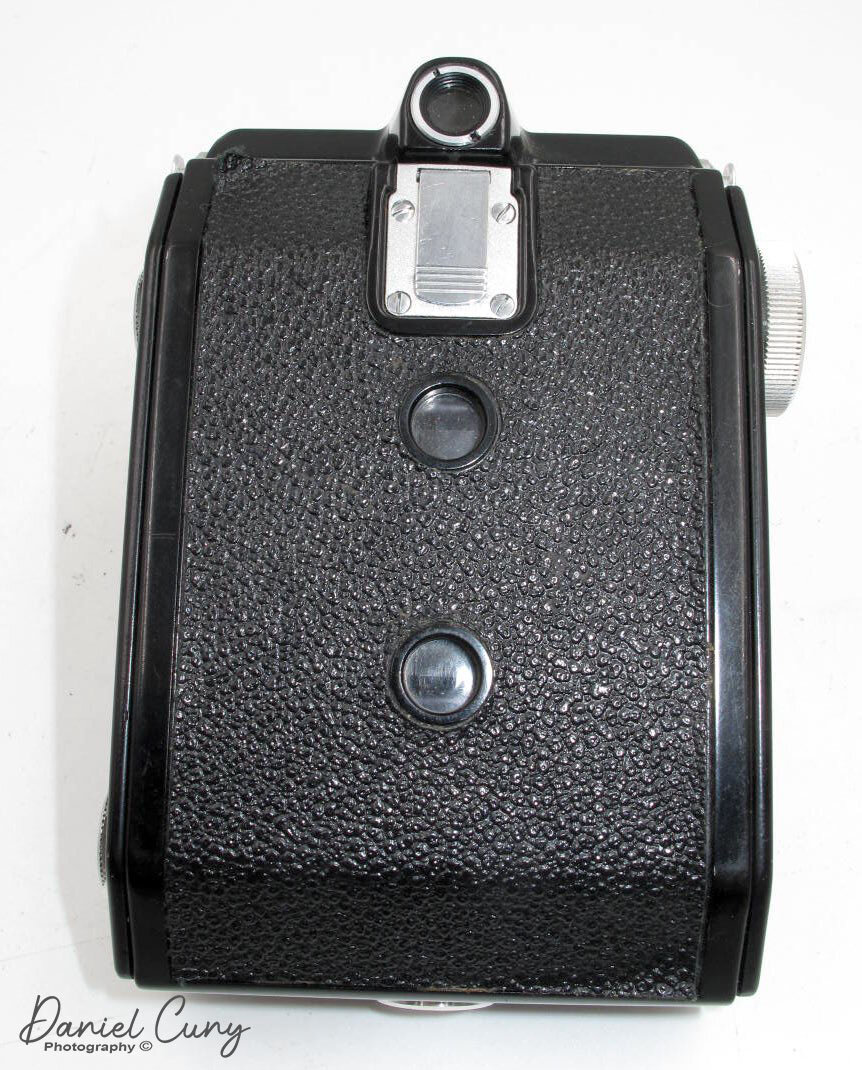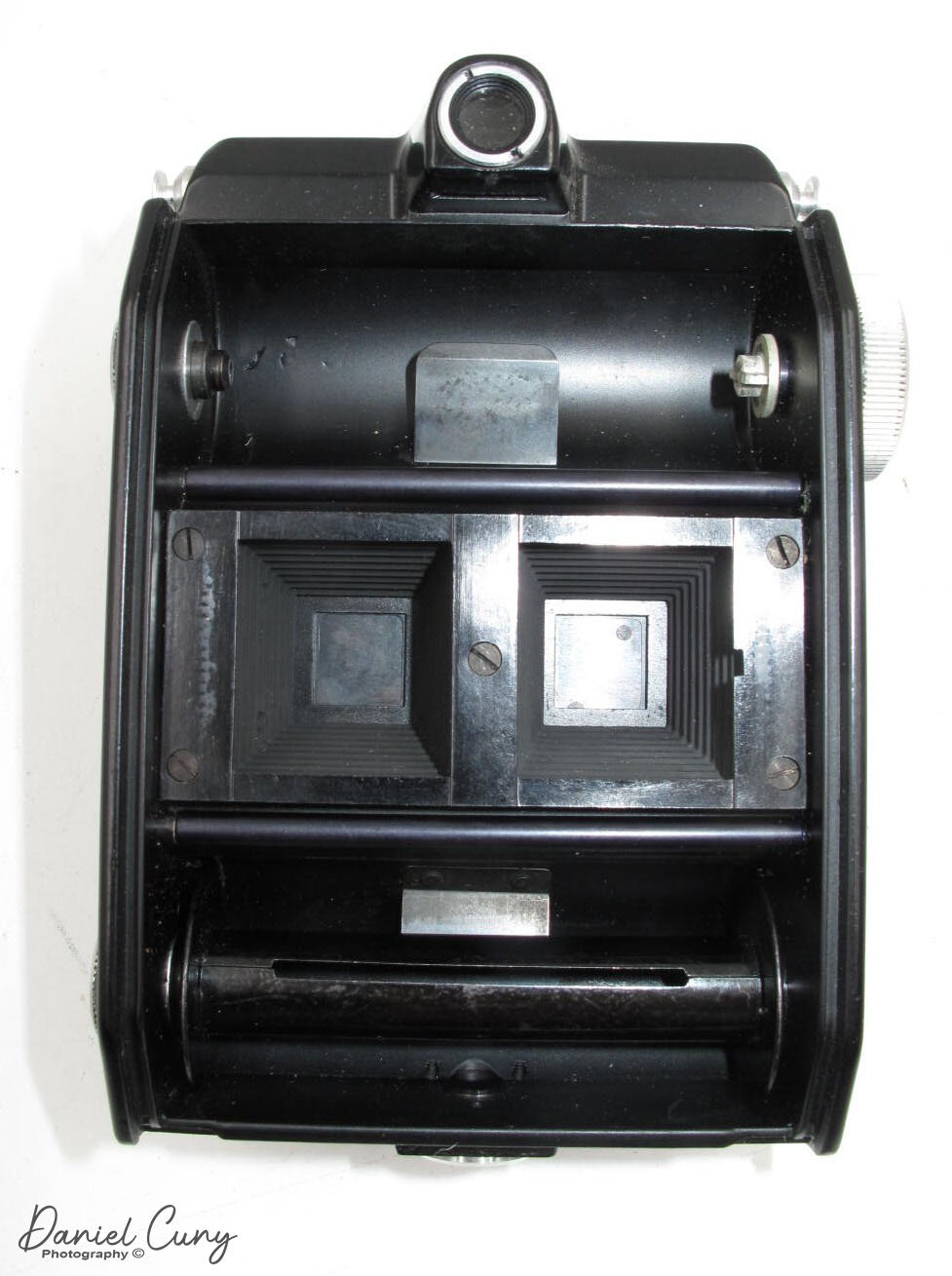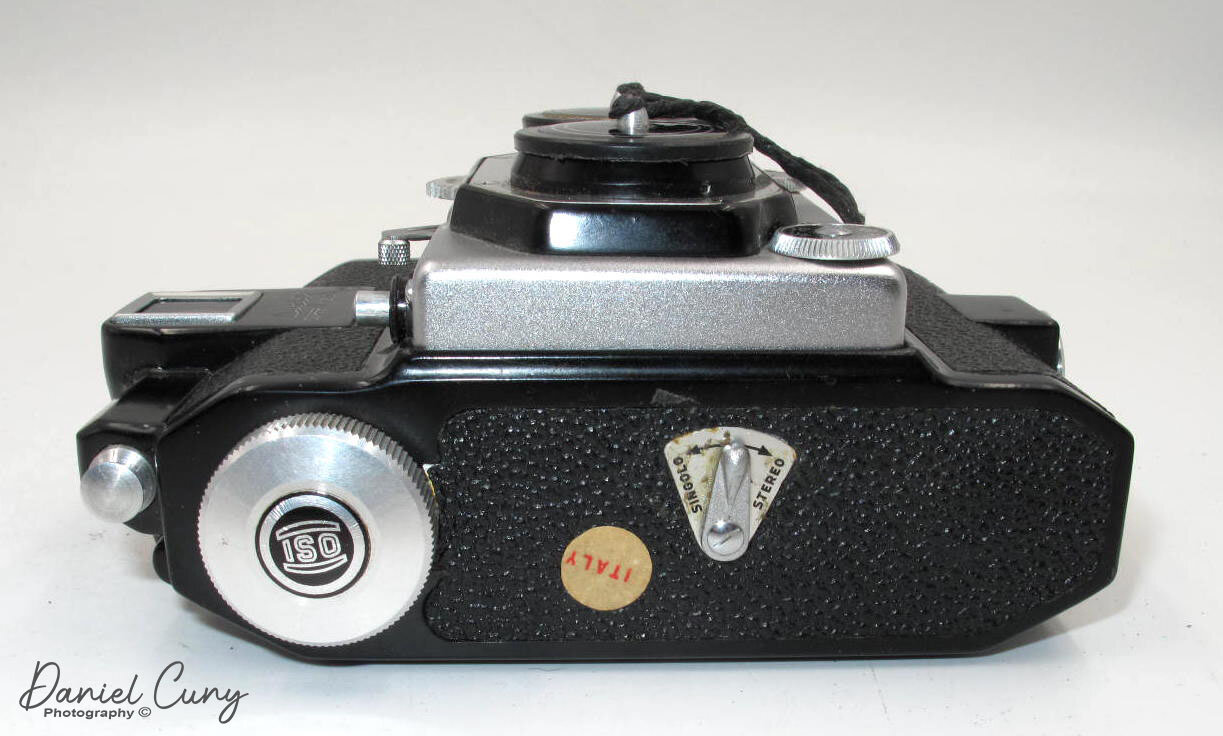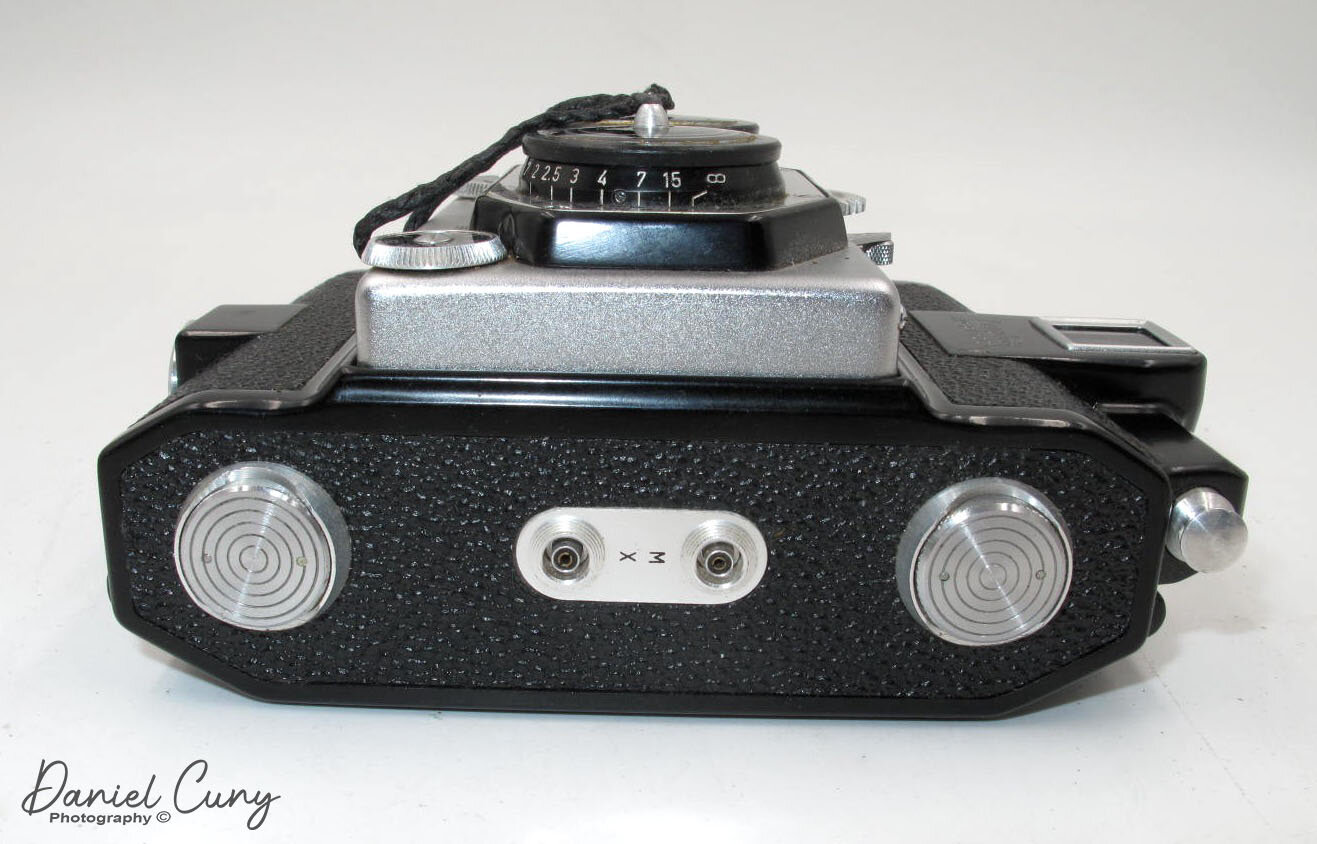As I've mentioned in the past, collecting cameras and other photographic items has always been a passion. While I enjoy stereo cameras for what they produce, I don't have many in my collection. The Duplex Super 120 camera is one I've always liked, more for the design of the camera, which I find appealing.
Of course, the design and manufacturing of The Duplex Super 120 in Italy. That's why it has such an appealing design. The camera was manufactured by Industria Scientifica Ottica S.R.L. (ISO) in Milan, Italy, in about 1956. The camera company produced other sleek and expensive cameras like the Leica copy Bilux and Reporter. These two cameras I'm still looking to purchase. The camera I'm showing is the third and latest version of this camera. There was the original Duplex 120, then the Duplex Super 120, and then the third version has the unique side lever, which I'll discuss later.
The Duplex Super 120 is not only a very sexy camera but also offers some pretty special and unique features. First of all, it's a vertical format camera, and it uses 120 roll film. The images are produced in pairs next to each other instead of skipping frames on 35mm stereo cameras to produce left and right images. The Duplex camera put the 24mm x24mm image on the same frame of film. This camera also allows the photographer to create 24 images on a roll of 120 film due to its set up, which is another unique feature.
When you load the camera, the take-up spool is on the top of the camera. On the back of the camera are two viewing windows to see the frame numbers. To take the first set of photos, you wind the film until you see the number in the bottom window. Take your stereo photo, then advance the film until you see the same number on the top window, then expose again for the next frames. This feature allows for twice the number of images on the same frame of film. There is an interlock to prevent double exposures.
The camera has a unique layout. The viewfinder on top with the camera name under it. If you are facing the camera, below the name is the shutter release on the left. The shutter cocking mechanism is just behind the focusing knob in the center. The camera has two 35mm f3.5 Iriar lenses in the center of the camera body. Below the lenses on the left are the shutter speeds, which go from 1/200 to 1/10, and "P" on other cameras would be "B." On the other side of the camera from the shutter speeds is the aperture control, f3.5-f22. Below the two lenses on the underside of the camera body housing is an eyelet that holds the two lens caps. The other side of the camera is the PC outlets for flash with both "M" and "X" sockets. On the back of the camera is a lever that allows you to take the back off to load and unload the film.
Some of the accessories I've seen for the camera are a pistol grip which mounts on the tripod socket, cable release with adapter, leather case, flash bracket, stereo viewer, film mounting press for both card and plastic mounts.
If you have comments, suggestions, or just general questions regarding this or any other cameras from my blog, I’d love to hear from you.






